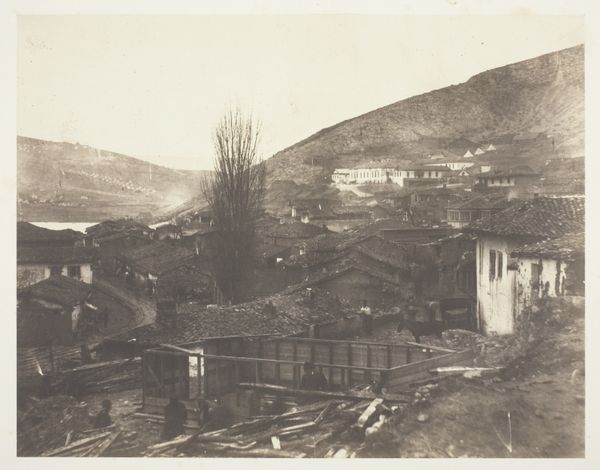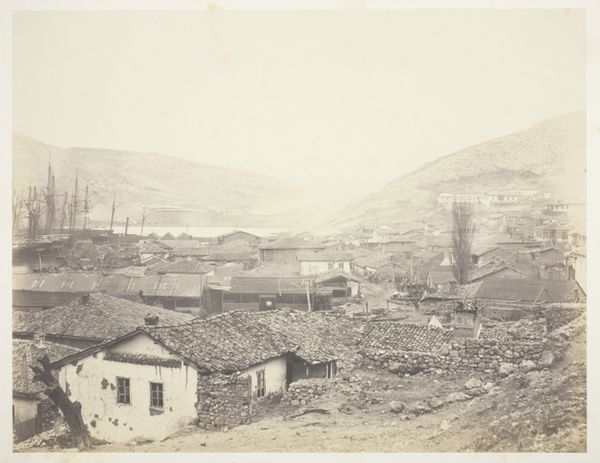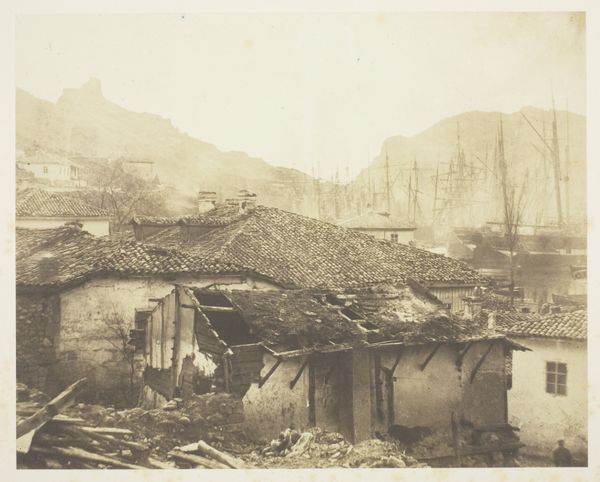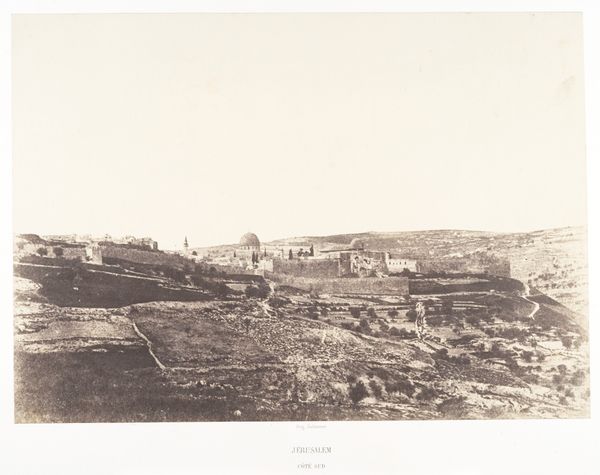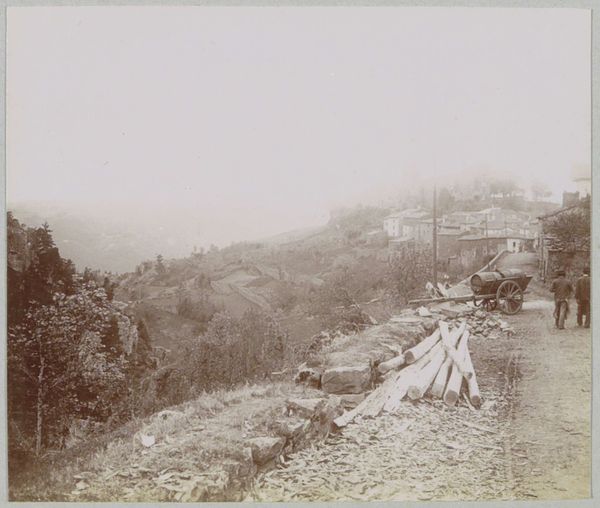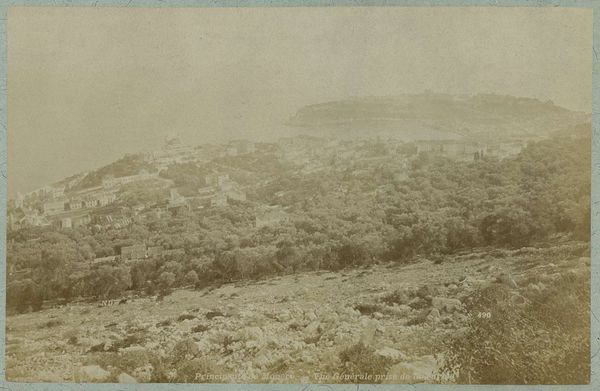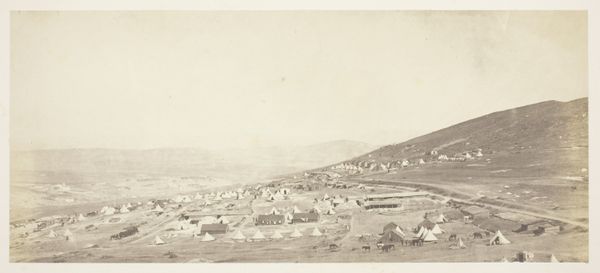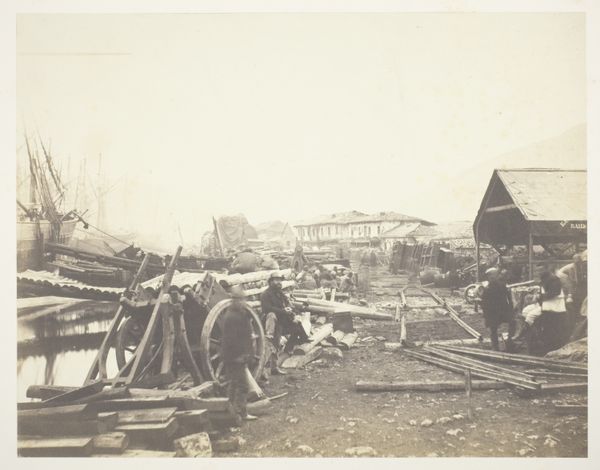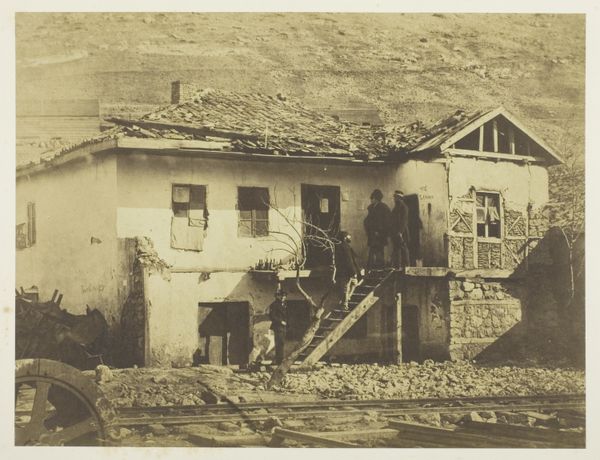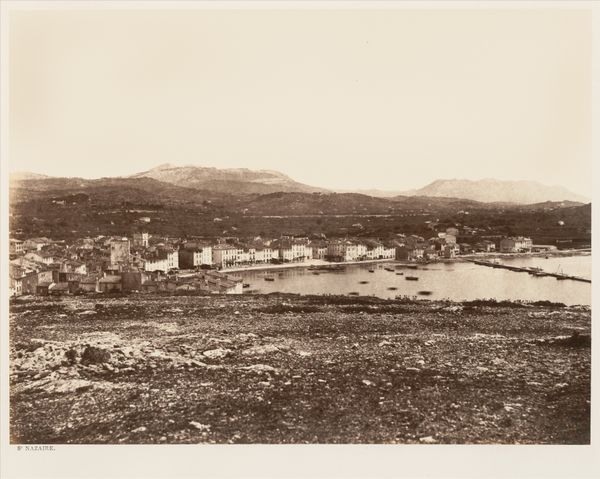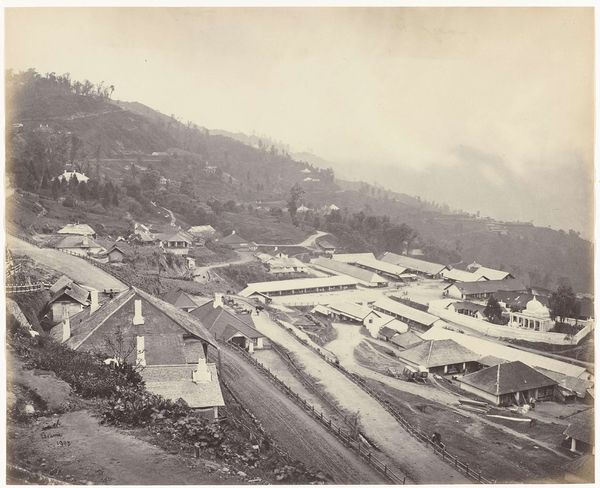
print, daguerreotype, paper, photography
# print
#
landscape
#
daguerreotype
#
paper
#
photography
#
genre-painting
Dimensions: 27.7 × 35.7 cm (image/paper); 40.4 × 53.1 cm (mount)
Copyright: Public Domain
Curator: This is "Balaklava, looking Seawards," a landscape captured in 1855 by Roger Fenton. The location is Balaklava, now part of Ukraine, and Fenton created this poignant image during the Crimean War. Editor: The sepia tones lend a hazy, dreamlike quality. It feels melancholic, perhaps owing to the somber, muted palette and almost ethereal atmosphere, wouldn't you agree? Curator: I do. As one of the first war photographers, Fenton faced immense constraints. Heavy equipment, long exposure times and of course, censorship shaped the image. Note the buildings and subtle activity in the harbor; this was not a chaotic battle scene, reflecting a pressure to sanitize depictions of the war for the British public. Editor: Absolutely. And situated as we are, in our time, we're prompted to remember the romanticism inherent in so many war narratives. It really urges us to examine how conflicts are framed and sold, even—or perhaps especially—now. Who benefits, then and now, from a softened depiction of this port? Curator: The very act of creating a "landscape" instead of documenting direct conflict highlights the prevailing Victorian sensibilities about war. Fenton had patrons and a public to please, and outright gore was not an option. His photographs became instruments of shaping public perception. Editor: The composition itself subtly tells a story. The positioning of civilian buildings closer to the viewer and ships farther away directs our view, offering an "everyday" quality of wartime Balaklava. Curator: The genre scenes were an incredibly effective means to communicate war on a level the general population could stomach. He brings the war home without the disturbing cost of life we now expect. Editor: It really underscores how important context is to understanding an image. Seeing "Balaklava, looking Seawards," not simply as a pretty picture of ships but rather, as a controlled narrative that offers us more insight into both past conflict and, arguably, conflicts today. Curator: Looking at Fenton’s photograph again reminds me of the power of art and, more specifically, photography in influencing perception of warfare even at its earliest stages. Editor: Absolutely. I will never perceive this photograph and the Crimean War in the same way again. It pushes me to ask hard questions regarding war's consequences.
Comments
No comments
Be the first to comment and join the conversation on the ultimate creative platform.
